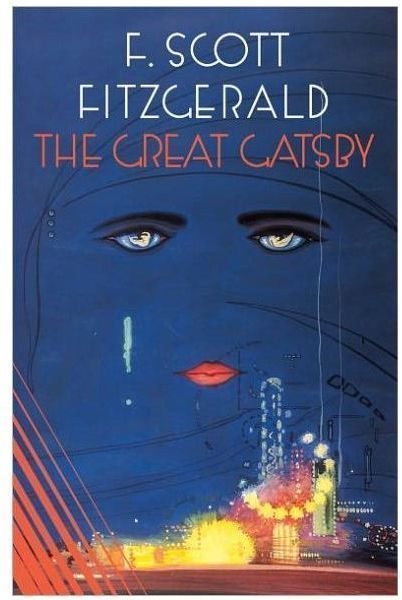The Roaring '20s: A Project-Based Learning Activity for The Great Gatsby - With Downloadable Handout
Project Introduction
Out of all of the classic American novels I teach, The Great Gatsby by F. Scott Fitzgerald is the most difficult for my high school students to grasp. They often get lost in the rambling first chapter, overlook the subtle hints given through dialogue and events, and wonder why it seems like the characters are in a state of perpetual partying.
The historical references made throughout the novel are equally baffling to them. As I always seek an opportunity to fold project-based learning into my curriculum, I developed this activity to set up for students the complicated and exciting era known as the Roaring Twenties. My students complete this project before we read; however, you can easily adapt it to be completed as an independent project during your reading of the novel, or as a unit assessment upon completion of the book.
Lesson Objectives
By the end of the project, students will be able to:
- Demonstrate knowledge of a specific area of interest from the 1920s as well as a general knowledge about the era.
- Develop a piece of writing that reflects what students learned during research.
- Cooperate within a group to accomplish completion of the project.
- Edit writing from peers.
Materials Required
-
Computers or compatible devices with internet access and word processor
-
Related books or resources (I sometimes use this unit to do a quick library orientation, or I provide students with a list of links that are particularly useful if they’re not the most adept researchers)
Lesson Procedure
- Activate background knowledge by asking students what they already know about the Roaring Twenties. Spend a few minutes brainstorming together.
- Introduce the novel as you see fit. I usually give a brief teaser of the novel—without giving too much away, of course—and discuss why it is important to understand the historical context of the story in order to get a clearer picture of the society Fitzgerald depicts.
- Distribute the project handouts. (Download the handout here.)
- Split students up into groups. You could assign groups or let them choose for themselves, depending on the composition of your classes.
- Each student within the small groups should choose an area to focus on for his or her research. On the project handout, I listed a few areas (cars, sports, technology, etc.), but you could easily add or deduct from the choices based on what you would like your students to know.
- Before your class starts researching, discuss the focus question of the project: What made the 1920s roaring? Inform students that although they will each be focusing on one topic area, their research overall should answer that question.
- Allow your students to complete some research in class. Project-based learning is research-driven because being able to discern a credible source from an unreliable source is a vital 21st century skill. Your task is to monitor students during their research and coach them toward more accurate and reliable information.
- Students will then write an article based on the research completed. Encourage students to focus on one aspect of their topics rather than simply summarizing their findings; for example, a student who researched sports in the 1920s could write an article about a particular boxer or cover a baseball game.
- After each student is finished writing, allow the small groups to reconvene. During this time, groups should share their articles with one another for two reasons: one, to teach each other what was uncovered during research; two, to proofread the articles for spelling and grammatical errors. Once the articles are edited, the groups should then begin to compile their magazines and work together to design and create a cover page that engages interest and previews the articles inside.
- When the magazines are complete, each group should come to class with multiple copies of their projects. Spend some time doing what I call a gallery walk: lay the magazines out in different areas of your classroom and allow the students to browse from project to project, reading articles and checking out the pictures. This is a way for students to present their work without the pressure of a formal presentation in front of their peers.
At the end of the project process, have students write a reflection in which they answer the question, “What made the 1920s roaring?”
Potential Modifications
My favorite aspect of this project is that it lends itself well to different emphases based on what you’re currently teaching. For example, when I have a class struggling with writing, I incorporate a mini-lesson about voice and tone before students write their articles.
If I have a class that is still getting used to project-based learning, I scale back on the requirements of the assignment and focus on the project process itself. Advanced students can easily accomplish this project outside of class.
No matter which way I choose to go, my students create products that they can refer to throughout our reading of the novel, making their experience with The Great Gatsby all the richer.
References
- Image Credit: The Great Gatsby, ISBN-13: 9780743273565, Publisher: Scribner, Publication date: 9/30/2004
This post is part of the series: Project Based Learning: High School English
These lesson ideas are a great start to adding project based learning into your curriculum.
- Salem Witch Trials Webquest: Project Based Lesson to Introduce “The Crucible”
- Music in “The Pearl” by John Steinbeck: Project-Based Learning Assessment
- American Poetry Anthology: A Project Based Learning Activity
- The Roaring ‘20s: A Project-Based Learning Activity to Introduce The Great Gatsby
- Seeing into the Future: A Project-Based Learning Analysis of Fahrenheit 451
- Review of the Writing Process: A Lesson Plan for High School Students
